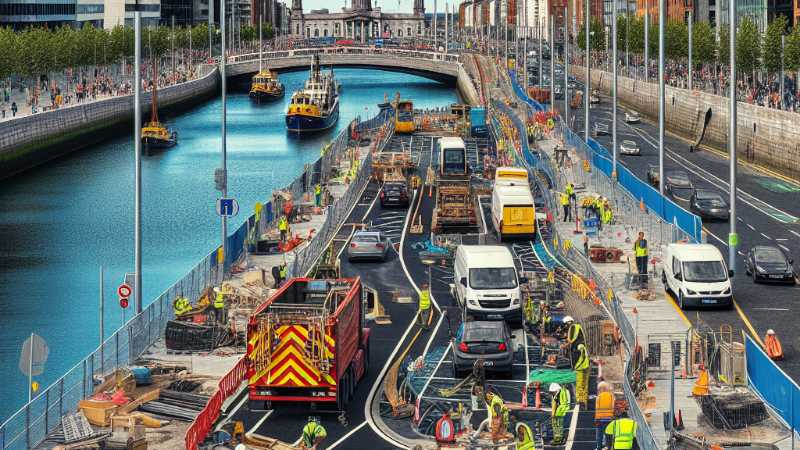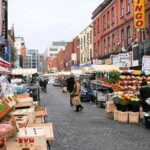Dublin City Council has approved new measures as part of its Transport Plan, with major changes set to affect motorists on the quays starting this summer. The first phase of the plan includes the installation of bus gates on Bachelor’s Walk and Aston Quay, restricting car access to these areas. Only public transport, taxis, cyclists, and pedestrians will be allowed to pass through these sections of the quays.
Another modification, taking effect in August, will involve a ban on cars turning left from Westland Row onto Pearse Street. These changes aim to reduce the number of vehicles traversing the city centre and prioritize alternative modes of transportation.
Popular backing
According to Brendan O’Brien, Dublin City Council’s Executive Manager for Transport, public consultation revealed that most respondents, including a majority of car users, supported the plan. The consultation garnered over 3,000 responses from the public, with 60% of traffic in the city centre consisting of public transport users.
Some concerns were raised regarding delivery vehicles accessing premises and car access into the city centre; however, these issues will be addressed.
The primary focus of these transportation changes, as emphasized by Councillor Darragh Moriarty, is to create a city centre that caters to the needs of people rather than cars. By prioritizing public transport, cycling, and walking, the city aims to reduce traffic congestion and make the area more accessible and enjoyable for all.
Around 60 per cent of the traffic in the core city center is through traffic. That is what is currently delaying us
Brendan O’Brien
The Dublin City Council’s ambitious transportation strategy targets a significant reduction of around 40% in the number of cars on the roads. It encourages substantial increases in the utilization of alternative modes of transportation, such as walking, cycling, and public transport within the city centre.
A major element of the transport plan is the introduction of new plazas in Custom House Quay or Beresford Place, along with making significant sections of Parliament Street, College Green, and George’s Street off-limits to vehicles.
The call for action is growing louder for the Dublin City Council to rectify decades of neglect in investing in improved public transportation infrastructure within the capital. From Professor Brian Caufield’s UCD perspective, the areas where cars are prohibited represent crucial bottlenecks for buses, prompting an urgent appeal to boost public transportation usage and alleviate traffic congestion.
The city’s governing body remains confident that the benefits of this transport plan will outweigh any initial apprehensions. They anticipate significant improvements in air quality, a reduction in carbon emissions, and an overall enhancement of the city centre experience.
The Dublin City Council’s ambitious initiative envisions a city centre characterized by reduced traffic, offering more accessible and inviting public spaces for the benefit and delight of residents and visitors alike. They intend to collaborate intimately with Ticketmaster to utilize the application as a valuable tool for event navigation while also providing comprehensive maps detailing alternate driving routes for reaching hospitals in the city centre.
The City Council acknowledges concerns about potential bias in the consultation process towards specific demographics. The members promise to maintain open communication channels, particularly with disability organizations, throughout the implementation of the project.
To ensure a smooth implementation of the transport scheme, the city’s policymakers remain committed to engaging in constructive dialogue with local businesses and residents, addressing their objections, and working together to find viable alternatives and accommodations.
The rollout of this comprehensive plan represents a momentous stride in the quest to establish a greener, more accessible, and inviting urban core within Dublin, catering to the needs of its diverse population and visitors.







